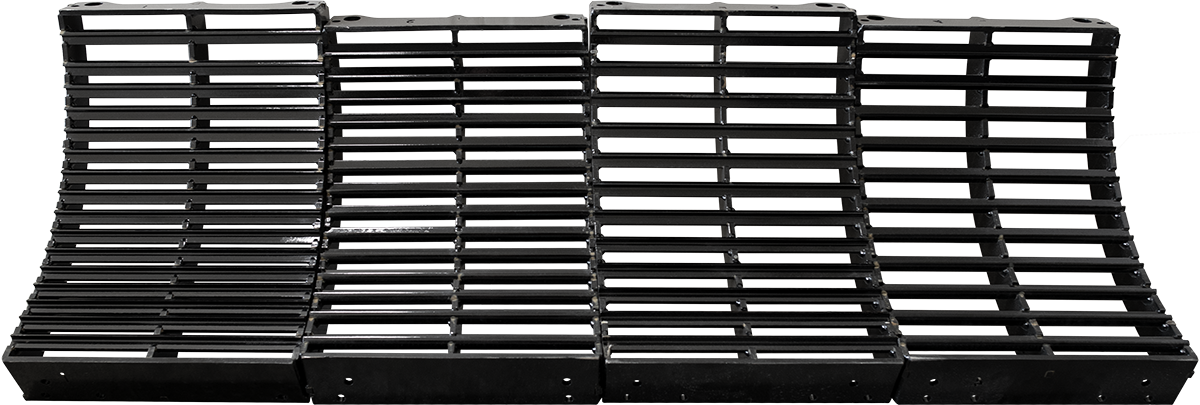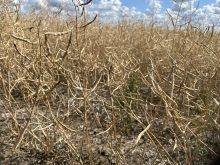With plans in place to reopen the U.S. border to younger live cattle trade by March, it is time to reacquaint ourselves with the American cattle market.
After a mostly strong year, the U.S. market is temporarily feeling the pinch as some packers have reduced production because of large operating losses.
The losses are the result of fed cattle prices that are higher than what the beef market will bear. U.S. beef prices, while still historically strong, are under pressure because of reduced exports, larger imports, weaker domestic demand and heavy carcasses.
Read Also

Producers face the reality of shifting grain price expectations
Significant price shifts have occurred in various grains as compared to what was expected at the beginning of the calendar year. Crop insurance prices can be used as a base for the changes.
By cutting production, packers hope to pressure beef prices higher and fed cattle prices lower.
The problems come after a fairly good year for most parts of the U.S. cattle industry.
The industry entered 2004 in a liquidation mode. The rule of thumb for the cattle cycle is a six to eight year accumulation phase when herd numbers increase, followed by a three to four year liquidation phase.
The current cycle began in 1990 and the accumulation phase lasted until 1995-96 when the large number of cattle pressured prices lower, triggering the liquidation phase.
Stronger market prices beginning in 2001 should have seen accumulation begin, but repeated droughts in the early part of the decade delayed herd rebuilding.
So the U.S. domestic cattle supply was tight in 2004, making for attractive calf and feeder prices.
In 2003, the tight supply and the ban on Canadian beef and cattle imports helped U.S. beef prices to soar in the late fall and early winter.
However, the market was disrupted by the discovery of a BSE infected animal in December 2003, stopping most American beef exports. America exported about 10 percent of its production, so that amount had to be consumed at home.
Also, beef imports climbed as Canadian beef imports resumed and imports from other countries such as Brazil and Uruguay climbed.
By the fourth quarter of 2004, these imports, combined with heavier domestic carcass weights, increased the per capita beef supply by about eight percent over the fourth quarter of 2003. This pressured beef prices and led to the packers’ margin squeeze.
Feedlots have their own problems, having paid high prices to fill pens in the summer. They now need about $90 US per hundredweight to break even, but the price is lower than that so feeders are losing money. They are holding back cattle, trying to force packers to pay more, but that is leading to heavier carcasses that contribute to the beef supply.
Another development weighing on prices is the apparent weakening of beef demand. Some believe the luster of high-protein low-carb diets is beginning to fade.
Also, consumers have the choice of buying large supplies of competitively priced pork and poultry.
Many believe these price-lowering pressures will continue in the beef and cattle markets until the spring, when the number of market-ready cattle is expected to tighten and buying for the early summer barbecue season begins.
But that is about the same time that Canadian cattle younger than 30 months would start arriving, barring additional disruptions caused by American legislators or R-CALF.
The U.S. Department of Agriculture estimates that 1.5 to two million head of fed and feeder cattle will cross the border this year. That is significantly more than the record export pace set in 2002 and private analysts expect the number to be closer to one to 1.4 million.
The latter would seem more accurate considering that Canada’s slaughter capacity has already increased and is about to jump more as the expansions of existing plants come on stream.
Also, the infrastructure of trucks, trailers and drivers that transported Canadian cattle south has dispersed in the last year because of the border closure and it will take some time to rebuild.
Darrell Mark, an agricultural economist at the University of Nebraska, has estimated that a one percent increase in cattle supply results in a 1.6 percent decrease in cattle prices. He said importing about one million Canadian cattle would increase American supply by almost three percent and lower prices there by about five percent from what they would be otherwise.
The wild cards in the 2005 forecast are whether Japan and South Korea will resume imports of U.S. and Canadian beef and whether consumers have tired of high-protein low-carb diets.
If the U.S. regains a foothold in the Asian beef market, the arguments of those who want to maintain the ban on Canadian cattle will be much weaker.
In late October, the Japanese agreed to resume importing U.S. beef from animals 20 months of age and younger. However, progress is caught in a debate over how to verify age. The Japanese prefer a cattle identification program that includes age, but the U.S. is nowhere close to implementing such a national system. The U.S. wants the Japanese to accept age verification by physiological means.
Mike Johanns, the Bush administration’s nominee for U.S. agriculture secretary to replace Ann Vene-man, has said getting Japan to accept U.S. beef will be his top priority.
As for the low carb diets, newspapers and television were full of stories during the holidays that the craze was over. However, the concern about obesity remains, as does a new more favourable understanding of how meat fits in our diet.
People might not be buying special low carb products, but they might opt for whole grain bread and pasta. As for beef, most people seem to love it and are happy to know it isn’t the nutritional problem it was once painted to be.
As for the cattle cycle, most analysts believe the Jan. 1 U.S. cattle inventory report due Jan. 28 will show that producers have finally begun to rebuild their herds.
The Livestock Marketing Information Centre says preliminary estimates put inventory at 0.3-0.7 percent above the January 2004 number. Decreased cow slaughter and increased heifer retention are expected.





![Protesters crowd a street carrying signs that read, "Global warming real. In other news, water is wet," and "Stop denying the [blue painted pic of the Earth] is dying."](https://static.producer.com/wp-content/uploads/2025/07/29145152/158171_web1_2019-10-18T222818Z_1221762151_RC14C26A65A0_RTRMADP_3_CLIMATE-CHANGE-THUNBERG-1200-220x165.jpg)










